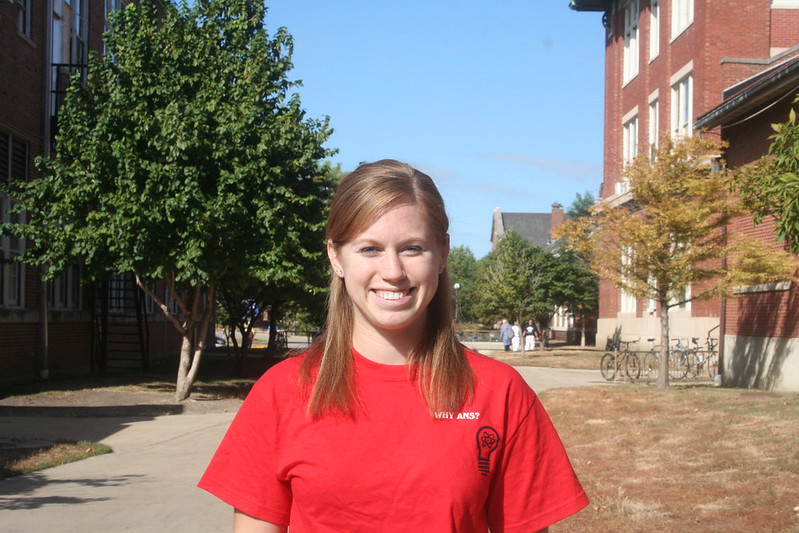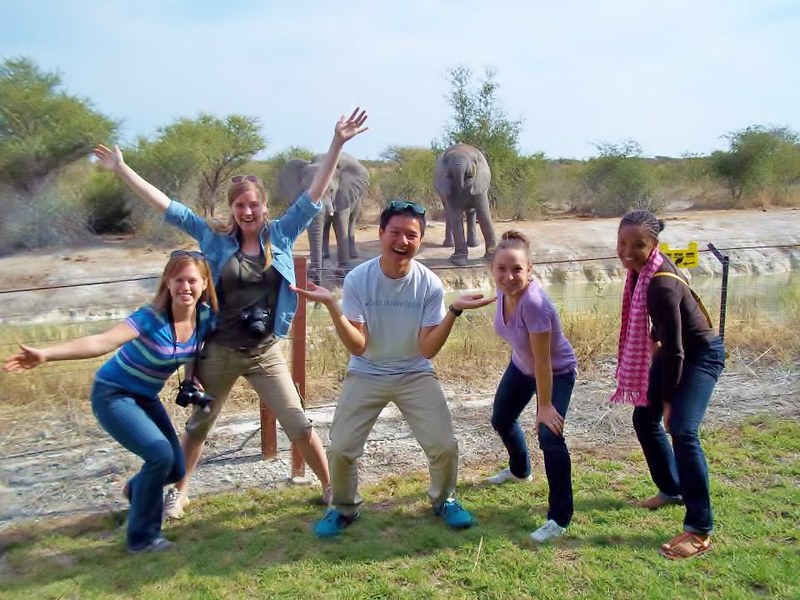Crossing Continents: Electricity and UV Light Enhances Student’s Summer Experience
Amanda Lietz, a senior in nuclear, plasma, and radiological engineering, spent four weeks of her summer in Botswana, Africa. Amanda worked on designing a hybrid power supply that would help bring electricity to a rural village. The six American students on the trip were each partnered with an engineering student from the University of Botswana. Together they traveled to Tsetseng, a tiny town of only 350 people that lies 40 kilometers from the nearest connection to the power grid. The electrical grid wasn’t extended to Tsetseng because of the small number of people there.
“But people had a need for electricity. There were refrigerators in town, which could be used for vaccines. Even some of the schools had devices, like donated computers and printers, but no electricity,” Amanda said.

Bringing Electricity
Amanda engineered a system with solar panels and a generator backup. She and her partner were able to scope out costs of the design they made. The main idea was for the design to be a “proof of concept” so that researchers could apply for funding.
Amanda found out about the international program through Professor David Ruzic, who collaborates with the professor leading the research program in Botswana. Amanda got a recommendation from Professor Ruzic and soon was able to apply the skills she learned at Illinois on her project. Though there were math and science skills involved, managerial skills were vital.
“I definitely applied what I’ve learned about presenting our ideas, and the practice of project management.”
The Cultural Exchange

Madikwe Safari
The coolest thing for Amanda was the everyday interaction with Botswana students. They worked, ate, and lived together, and the activities of daily life were a great learning experience. “I learned about the processes in a developing country. Though parts of Botswana are well-off with access to clean water, there are still many rural villages without electricity. Culturally, I learned that everything is more personal. You really have a conversation with people, even over the small things,” she said.
“People are so much more patient. That took some getting used to, because we as Americans are go-go-go. But the people from Botswana just go with it and get much less upset. It was bittersweet to leave. Botswana was so much fun,” Amanda said.

Research at Home
After Botswana, Amanda returned to Champaign for the rest of the summer. Since May, she has been researching extreme ultra-violet (UV) lithography. “Basically extreme UV lithography is an improved method to make features on computer chips smaller,” she said. In order to make patterns on computer chips, lasers are used.

“But they’re approaching a limit with the patterns they can make with laser lights, because of the wavelength. Sometimes they’ll do double patterning to get it smaller, but there is a physical limit with these chips. Extreme UV light has a shorter wavelength. We want to use extreme UV light to make these chips in the future,” Amanda said. She will be presenting her work at a conference this November. Amanda’s research is sponsored by Sematech, and she said it’s an opportunity to get hands-on experience while working on an industrial project.
Advice on Summer Activities for Future Engineering Students
Amanda emphasizes you should be clear on what you want to do and go find it.
“There are so many opportunities out there and you just need to apply. It’s that easy.”
Amanda advises students looking for experience in school to get involved early on, and to keep your options open, because you never know what’s in the future. “You may think you know what you want to do, but you may come across something that is even better,” she said.

Gaborne, capital city of Botswana
Amanda is soo awesome!!!